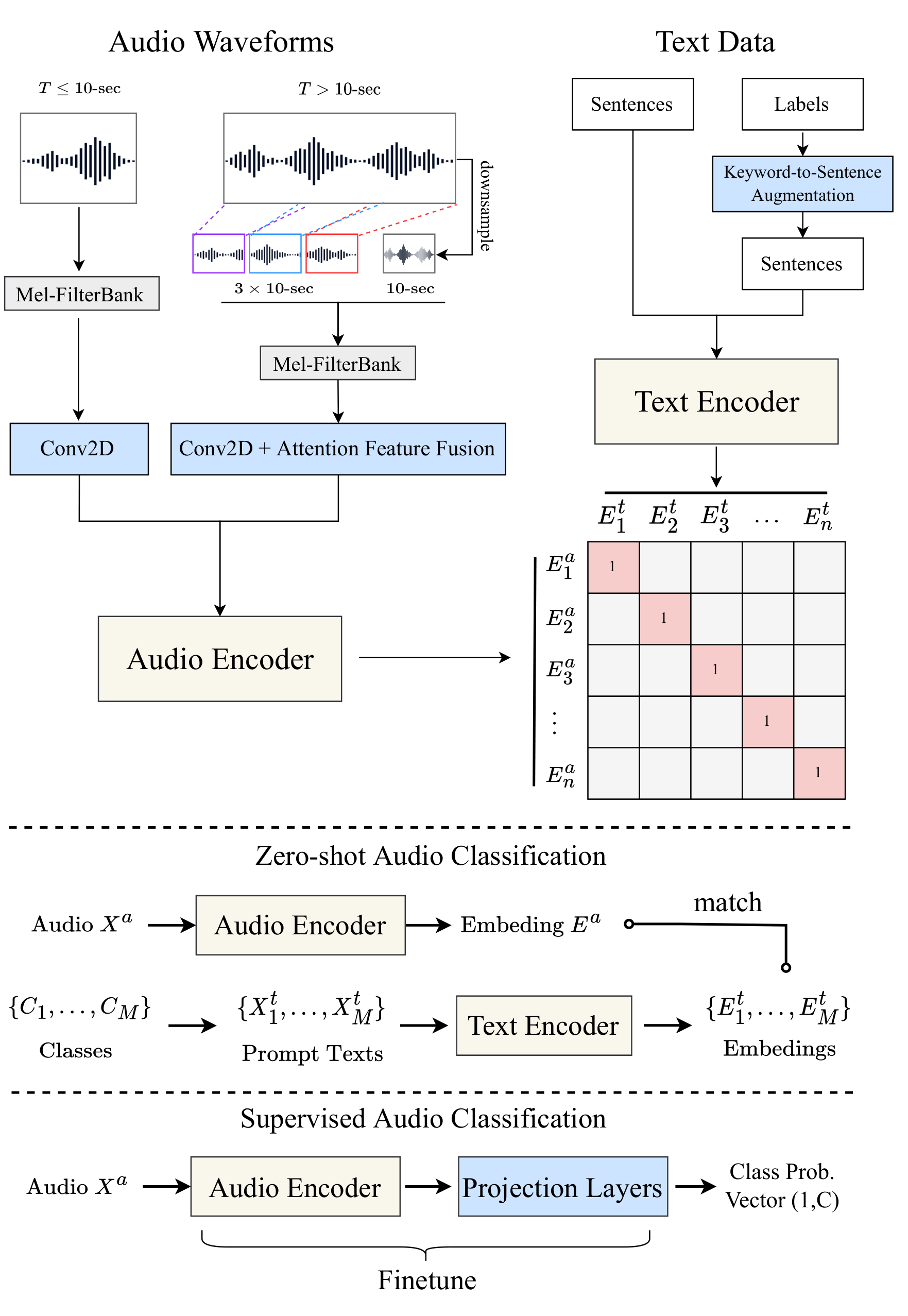Contrastive Language-Audio Pretraining, known as CLAP. Referring to the CLIP (Contrastive Language-Image Pretraining) architecture, similarly, the CLAP architecture is as follows.

The repository contains code for the following paper:
This project is a project in LAION that aims at learning better audio understanding and getting more audio data. This is an opensource project. We adopt the codebase of open_clip for this project. The major opensource contributers of this project are (in equal contribution): Yusong Wu, Tianyu Zhang, Ke Chen.
many thanks to @cfoster0 for allowing us to use his repo name.
To install the same environment as we use, please run the following command:
conda create env -n clap python=3.10
conda activate clap
git clone https://github.com/LAION-AI/CLAP.git
cd CLAP
# you can also install pytorch by following the official instruction (https://pytorch.org/get-started/locally/)
pip install torch==1.11.0+cu113 torchvision==0.12.0+cu113 torchaudio==0.11.0+cu113 -f https://download.pytorch.org/whl/torch_stable.html
pip install -r requirements.txtWe use training data in webdataset format. For details of our dataset please see https://github.com/LAION-AI/audio-dataset.
Please find the script of training, fine-tuning and evaluation (zero-shot and retrieval) in the experiment_scripts folder.
The scripts included there are the one we used to train our model on a SLURM cluster.
You need to change the script to fit your own environment.
For example, in a single machine multi-GPU setting, you might want to use torchrun instead of srun to run the script.
To train on a single GPU machine, use CUDA_VISIBLE_DEVICES=0 python -m ... instead of srun.
We use Weights and Biases for experiment logging. You need to configure the weights and biases in your environment.
TODO
The pretrained checkpoints can be found in here. Please refer to the previous section for how to load and run the checkpoints.
The checkpoints list here for each model setting is the one with the highest average mAP score in training. The average mAP score is calculated by averaging 4 scores: A-->T mAP@10 on AudioCaps, and T-->A mAP@10 on AudioCaps, A-->T mAP@10 on Clotho, and T-->A mAP@10 on Clotho.
If you find this project and the LAION-Audio-630K dataset useful, please cite our paper:
TODO
This project is working in progress, thus the codebase and model might not be perfect or bug-free. We will very much appreciate any kind of contribution or and issue raised. If you find a bug or have any suggestion, please feel free to open an issue or contact us. If you would actively contribute to this project, please join the discord of LAION.